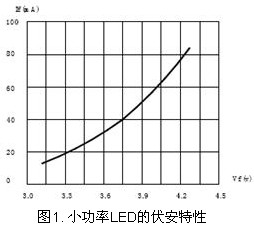There are a lot of different plausible arguments about this problem. Some people say that in the volt-ampere characteristics of the LED, the voltage is fixed and the current is fixed. Therefore, the effect of using constant voltage and constant current is the same. Some people say that when the LEDs are connected in parallel, they should be powered by a constant voltage power supply. When the LEDs are connected in series, they should be powered by a constant current power supply. Some people say that because the LEDs are constant current devices, they must be powered by a constant current source. Some people say that they are powered by the mains. When using a constant voltage power supply, it should be powered by a constant current power supply. As for why this is required, it seems that no one can say it.
So, should we use a constant voltage power supply or a constant current power supply?
Let's first look at what kind of device the LED is. Because the brightness of the LED is proportional to its forward current, and the structure of some LEDs determines its heat dissipation is the power consumption. Therefore, most LEDs will give the rated current, for example, Φ5 is 20mA, 1W is 350mA, etc., but this does not mean that the LED can only work at these rated currents, and it does not mean that the LED is a constant current device. For example, Cree's 1 watt LED and 3 watt LED are the same model, the current is increased from 350 mA to 700 mA, and the power is increased from 1 W to 3 W, so this LED can work at any value between 350-700 mA.
To understand this problem in depth, you must first understand the volt-ampere characteristics of LEDs.
1. Volt-ampere characteristics of LED
The Chinese name of the LED is the LED, so it is a diode itself. Its volt-ampere characteristics are very similar to the general diode volt-ampere characteristics. But usually the curve is very steep. For example, the volt-ampere characteristics of a 20 mA straw hat LED are shown in Figure 1.

If it is powered by a dry battery or a battery, because of the nonlinearity of the volt-ampere characteristics of the LED, a small voltage change will cause a large current change. In the above figure, the forward voltage is 20mA when the power supply voltage is 3.3V. Three sections of dry battery power supply, the new battery voltage exceeds 1.5V, the three sections are 4.5V, the LED current will exceed 100mA, and will burn out soon.
The same is true for 1W high-power LEDs. Figure 2 shows the volt-ampere characteristics of a company's 1W LED. The voltage of a 12V battery can be reduced from 14.5V to 10.5V when fully charged to fast-release. The difference is nearly 20%. As can be seen from the volt-ampere characteristics, a 10% change in the supply voltage (3.4V-3.1V) causes a 3.5-fold change in the forward current (from 350mA to 100mA).

Figure 2. Voltammetric characteristics of a 1W high power LED
![<?echo $_SERVER['SERVER_NAME'];?>](/template/twentyseventeen/skin/images/header.jpg)